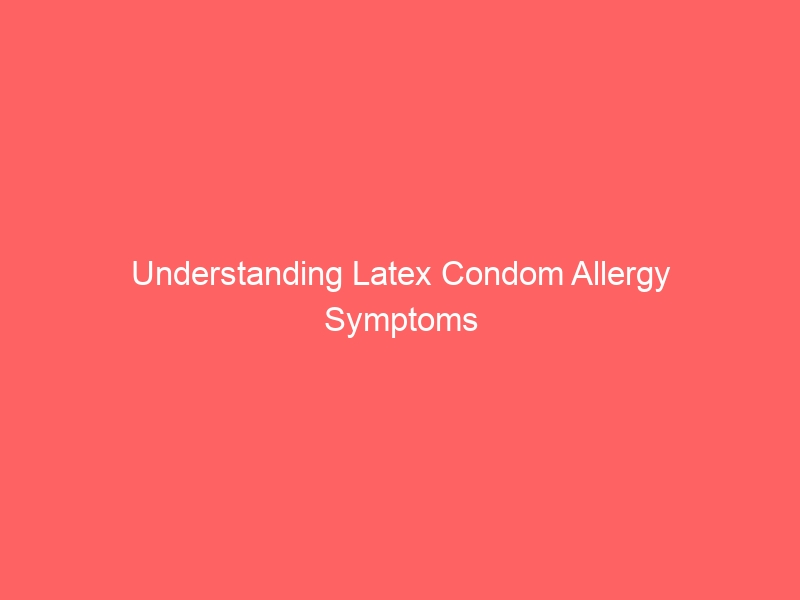I’ve often heard about latex condom allergy but never really understood how it could affect someone until I learned more about it. It’s surprising to discover that many people experience symptoms that can be quite uncomfortable, yet they might not even realize it’s due to latex. In this article, I’ll explore the common symptoms of latex condom allergy and help differentiate it from other reactions. I’ll also delve into potential causes and safe alternatives that can keep intimacy enjoyable without the risk of allergic reactions. If you think you might be experiencing these symptoms, I’ll guide you on when it’s time to seek medical advice.
Common Symptoms of Latex Condom Allergy
Common symptoms of a latex condom allergy can include itching, redness, and swelling in the genital area. I’ve noticed that after using latex condoms, I sometimes experience a burning sensation. It’s frustrating when my skin reacts this way, making intimacy uncomfortable. I’ve also had instances where I developed hives around the area, which was concerning. It’s important for me to recognize these signs and consider alternatives.
Differentiating Between Latex Allergy and Other Reactions
Differentiating between a latex allergy and other reactions can be challenging, but I’ve learned to look for specific symptoms. I’ve noticed that hives or rashes appear almost immediately after contact with latex. In contrast, irritation from other materials tends to develop more gradually. When I experience swelling or difficulty breathing, I know it’s likely an allergy rather than a simple irritation. Keeping track of my reactions has helped me identify what’s causing my symptoms more effectively.
Potential Causes of Latex Condom Allergy
Latex condom allergies can stem from the proteins found in natural rubber latex, and it’s something I’ve had to consider. I’ve noticed that exposure to latex can lead to skin irritation and even rashes. Sometimes, I experience itching or swelling after using latex products. It’s frustrating to think that a common item could trigger such reactions. I’ve had to be cautious and explore alternatives to avoid discomfort.
Safe Alternatives to Latex Condoms
There are several safe alternatives to latex condoms that I can consider for protection. I’ve found polyurethane condoms to be a great option since they’re thinner and transmit heat well. Then there are polyisoprene condoms that provide a similar feel to latex but without the allergens. Lambskin condoms are also available, but I know they don’t protect against STIs. I appreciate having these choices to ensure my safety and comfort.
When to Seek Medical Advice
Knowing when to seek medical advice is crucial if I experience severe reactions or persistent symptoms after using latex condoms. If I notice any swelling, difficulty breathing, or hives, I won’t hesitate to reach out to a healthcare professional. I’m aware that persistent irritation or rashes might also indicate an allergic reaction that needs attention. It’s important for me to monitor my symptoms closely and not dismiss them as minor. Getting timely advice can help ensure my health and well-being.
If you’re interested in exploring the fascinating history of chastity devices and their use by parents throughout the ages, I highly recommend visiting this insightful webpage: historical chastity devices. It offers a unique perspective that complements your understanding of personal health topics like latex condom allergies. Don’t miss out on this intriguing read!
